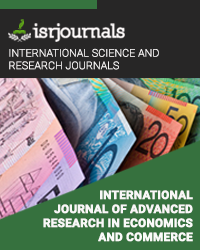impact of tourism on environmental conditions of jammu and kashmir
Malik Ab. Rashid,Bhat Arshad Hussian,Bhat Fayaz Ahmad
Published in International Journal of Advanced Research in Economics and Commerce
ISSN: xxxx-xxxx Impact Factor:xx Volume:1 Issue:1 Year: 08 June,2013 Pages:36-44

Abstract
Mountain regions and communities often have fragile environments and socio-economic relations, the latter frequently important factors in environmental management. Problems associated with tourism in mountain regions include: sewage pollution of rivers, sedimentation and emissions from construction activities, erosion and landslides linked to trails and skiing/ snowmobiling, water extraction from streams to supply resorts, damage to habitats during construction and use, interruption by roads and construction of animal migration between life zones, litter accumulation on trails.In This background the present paper highlights the impact of tourism on environmental conditions of Jammu and Kashmir. The main potential adverse impacts of tourism on the environment include: Pressure on natural resources, Harm to wildlife and habitats, with associated loss of biodiversity, Pollution and wastes, Social and cultural pressures related to conservation and sustainable use of biodiversity etc.
Kewords
Environment degradation externality pollution
Reference
Ashworth, G. J. (1989). “Urban Tourism: An Imbalance in Attention.” In Progress in Tourism, Recreation and Hospitality Management, edited by C. P. Cooper. London: Bellhaven, pp. 33–54. Bakshi S. R. (1997) “Kashmir: Tourism Monuments and Floklore” Sarup and Sons, New Delhi. Bhat M.S and Misri, M.C (1994) “Poverty planning and Economic Change in Jammu and Kashmir” Vikas Publishing House Pvt. Ltd. Chon, K. S., and K. J. Mayer (1995). “Destination Competitiveness Models in Tourism and Their Application to Las Vegas.” Journal of Tourism Systems and Chopra, Sunita (1991) “Tourism and Development in India”Ashish Publishing House New Delhi. Economics Survey 2011-2013, Directorate of Economic and Statistical Planning, J&K. Francois,V.andB.Lionel (1995) “International Tourism” Macmillion, London.

